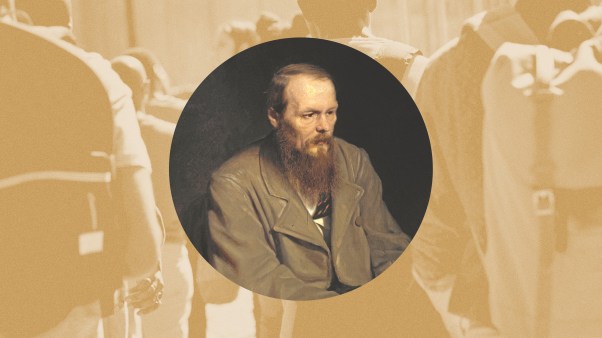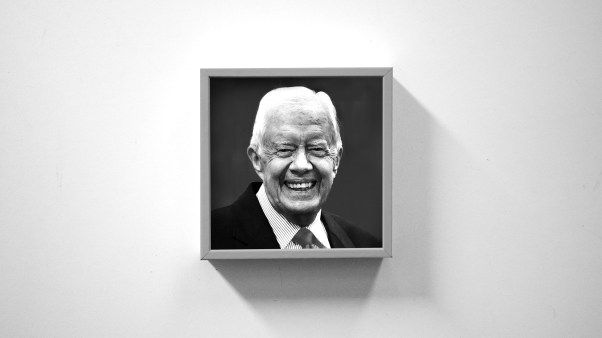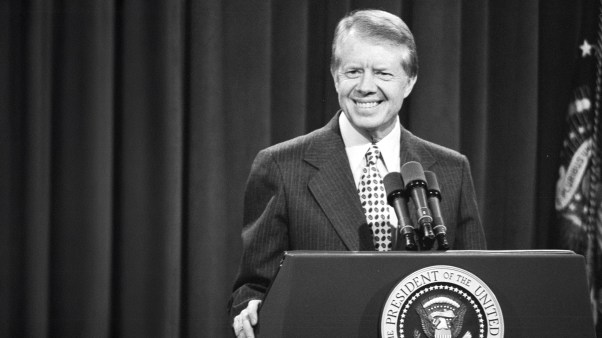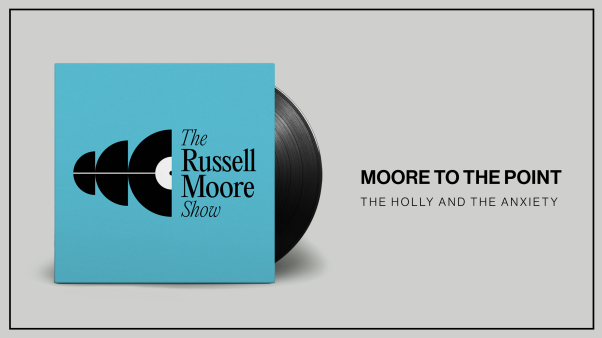My mixed-race identity is so much a part of me that when asked to bring an object that represented me to a group interview icebreaker, I came in with a blender.
Perhaps my own disparate ancestries—my father is Chinese and Hawaiian, and my mother is Caucasian—make me more curious to know and connect and mix with others from all sorts of backgrounds. I love hosting parties, I flit around networking events, and I somehow always find ways to connect with strangers.
My social personality, as well as my Bay Area upbringing, meant that I felt comfortable in different settings, from my majority-minority Catholic high school to my largely white Christian college. But there, I began to notice that fellow students of color mostly just hung out with each other, and the school’s programming seemed to reinforce this enclave.
Raised in white evangelicalism, I had the vocabulary and references to get along with white classmates at college. Because I was so comfortable there—and could largely pass as white, as I realized when someone asked if my last name was “Lee, like Robert E. Lee”—I didn’t recognize how draining it would have been for other minorities to socialize, live, and learn in this setting.
Despite being three hours from New York City and two hours from Philadelphia, a surprising number of my white classmates had spent little time in the city. When I traveled home to visit their communities over Thanksgiving and Easter holidays, I noticed few lived in racially diverse communities, attended multiethnic churches, or had friends outside their race. I grew up with a handful of childhood friends whose parents were also white and Asian, but I didn’t meet a single other person in college who shared my background.
In retrospect, I’m not surprised that the students of color often congregated together.
The limits of multiethnic gatherings
In recent years, the kind of self-segregation I noticed in college has taken on a more deliberate structure in the American evangelical world, with a growing number of organizations offering sessions and events especially and exclusively for people of color.
Two years in a row, the Christian Community Development Association held post-conference retreats entirely for women of color. The Gospel Coalition women’s conference had an event for women of color; IF: Gathering has previously done the same. Last year, I attended Entrusted Women, an online community turned retreat for Christian female creatives of color, and earlier this year, Someday is Here, for Asian American Christian women.
College me would have scratched my head at their existence, confused about the inadequacy of multiracial or multiethnic spaces. And plenty of people still do. Fellow evangelicals ask, “Aren’t we supposed to be one church, undivided?” They bring up how the Great Commission, Acts, and Revelation describe “all nations” being called to worship God as one church and how Christ overcomes our ethnic divisions, for in him “there is neither Jew nor Gentile” (Gal. 3:28).
But I have grown to see firsthand how events, organizations, and ministries for ethnic minorities play a crucial role in individual believers’ spiritual lives and bless the church as a whole.
The move toward putting on Christian gatherings for people of color or a single ethnic group might seem at odds with the growth in multiethnic churches and ministries. In the United States, nearly a quarter of evangelical churches now qualify as multiethnic, meaning no single racial group makes up more than 80 percent of the congregation, according to new research published last week in the Journal for the Scientific Study of Religion.
But sociologists found—as they have in the past—that diverse congregations don’t necessarily result in shifting understanding around issues like racial justice. Most multiethnic churches are white-led, white-majority congregations that pursue diversity in ways that won’t “challenge white congregants’ views and practices.”
I’ve seen a similar phenomenon play out at parachurch ministry events and conferences. Despite efforts to diversify these gatherings, the cultural default too often remains that of the majority. Even when well-intentioned organizers expand speaker lineups and topics, those in the minority are usually still put in a position where they give up on their cultural preferences for the sake of broader appeal. On a global scale, I attended a Christian event in 2019 with attendees from more than 90 countries. Though held outside the US, the entire event was in English and nearly every worship song, a Western one.
I’ve also heard from fellow Christians of color for several years about why they feel out of place in evangelical spaces. Their candor has challenged me to consider how those of us in the church can affirm people in their faith and their culture. I realized that because I work toward showing hospitality to those in the majority culture, my “performance” puts them so at ease that they are less likely to do the work toward understanding my cultural background and preferences as a mixed-race person.
In the past year, a coworker and I have organized events for people of color who work for Christian ministries in the Chicago area. Not surprisingly, the biggest topic of conversation is about the struggle that can come with occupying a workplace that was not built with us in mind. Our meetings have allowed folks to release some of the frustrations and misunderstandings that come up in the workplace. And because people attend these spaces for relief, the caliber of conversation is often richer, deeper, and a catalyst toward deep friendships once we leave the room.
A couple years ago, I started a storytelling community for people of East Asian American descent. (I told you—I’m a networker!) I rightfully received questions about its narrow focus and tried to explain that narrowing the group to people of Japanese, Chinese, and Korean descent enabled us to explore these identities in a much more nuanced and layered way.
Although from the outside it could seem narrower or more homogenous, the longer you spend in ethnic-affinity groups, the more you’re able to see how much richer the diversity is. To that end, within our group, we have had conversations about the tensions of straddling Taiwanese and Chinese identity, discussed the complexities of Korean Christianity, heard from people whose parents were in Beijing the night of Tiananmen Square, and considered the legacy of Japanese internment camps decades later.
A different cultural default
Fellow Christians have also questioned the formation of gatherings restricted to people of color or a single racial or ethnic group. Author Jemar Tisby spoke to the pushback over black Christian spaces, asking, “How do you say, ‘This is not for you,’ without being perceived as anti-white? If you publicize your intent to only gather with black people, that only brings more questions and condemnation from those who don’t understand the need for black solidarity.”
Some Christians may genuinely wonder why not simply diversify broader gatherings, as I was inclined to advocate for in my younger years, or they may pointedly ask, “Why can other ethnic groups form their own gatherings but not white people?”
At times, we all need places where we do not have to explain ourselves, our references are understood, and our fears and frustrations are shared. These spaces can also serve as sanctuary from the racism and cultural ignorance that too many people of color confront in majority white spaces. That level of familiarity can foster deeper fellowship and discipleship. But, as the sociologists have shown, existing churches and ministries provide those settings for white Christians; as the majority, their cultural cues are the standard, even when nonwhite minorities are around.
I’ve learned not to underestimate the significance of affinity groups as a reset to our cultural default. Rather than having to translate, contextualize, or skip over your family’s favorite songs, TV shows, or household rituals, there’s a sense of solidarity from talking with people who share your background. We obviously grow from spending time with people whom we must explain ourselves to—indeed Christ calls us to that kind of boundary-crossing friendship—but we also benefit from being around those who know enough to grieve with us, comfort us, and hold us accountable.
White Christians in the US may not see their preferences as specific to their culture, but trends show they share the same impulse. White churchgoers rarely place themselves in a position of being a cultural minority; the recent research described the growing diversity in American churches as “one-way traffic” to majority white churches, with white people “unwilling as ever” to attend black churches.
Being hapa and Christian
Perhaps the most meaningful group I’ve ever been a part of was when I went to InterVarsity Christian Fellowship’s Urbana several years ago and attended their breakout group for Polynesian students. Surrounded by Hawaiian Christians, even though I didn’t know all the songs or inside jokes, the small local knowledge I had via my father resonated with others.
What’s more, the setting offered a space that validated both my Christian and Hawaiian identity—and a vision that a closer relationship with one could occur alongside the other. This promise of integration between faith and cultural identity has stayed with me and is one reason why I am planning to travel to Hawaii by the end of this year.
The Hawaiian language has a word for mixed people, hapa, which my dad taught me as a girl. The term has been a gift over the years—a single, whole word to sum up what can seem like multiple, fragmented identities.
This reconciliation of dissimilar cultural identities is part of the handiwork of a God who does not ask us to be one thing at the expense of another. He transcends the blender metaphor I used for my icebreaker. He knows us in all our cultures and backgrounds, all our commonalities and differences, invites us into his kingdom, and calls us good.
Morgan Pomaika’i Lee is CT’s global media manager and the cohost of Quick to Listen. She is on Twitter at @mepaynl.









